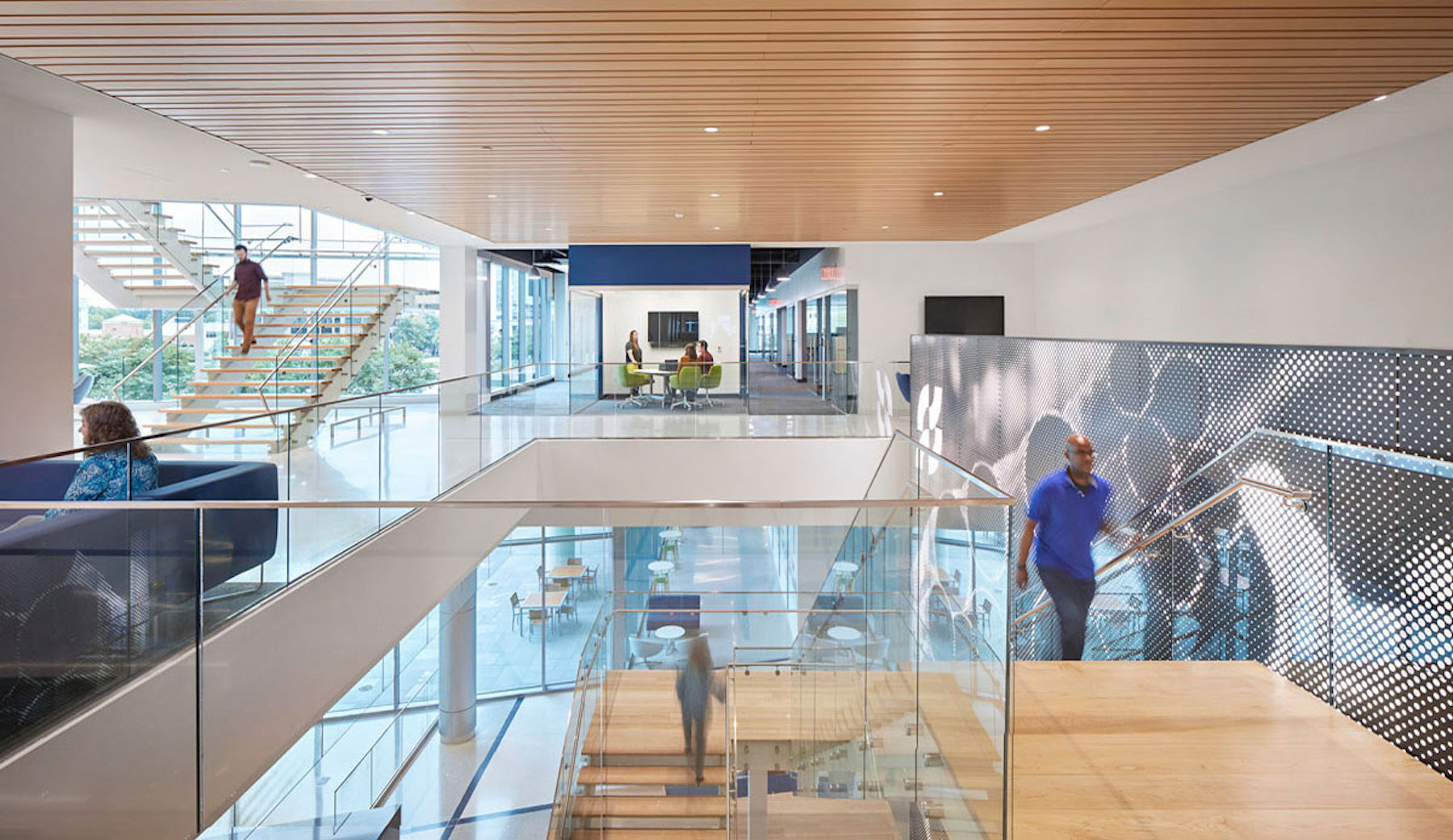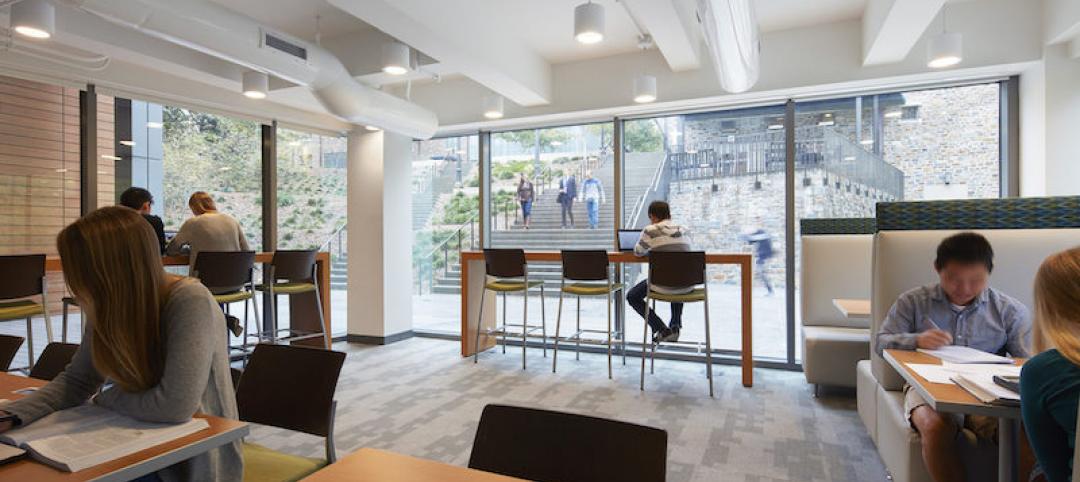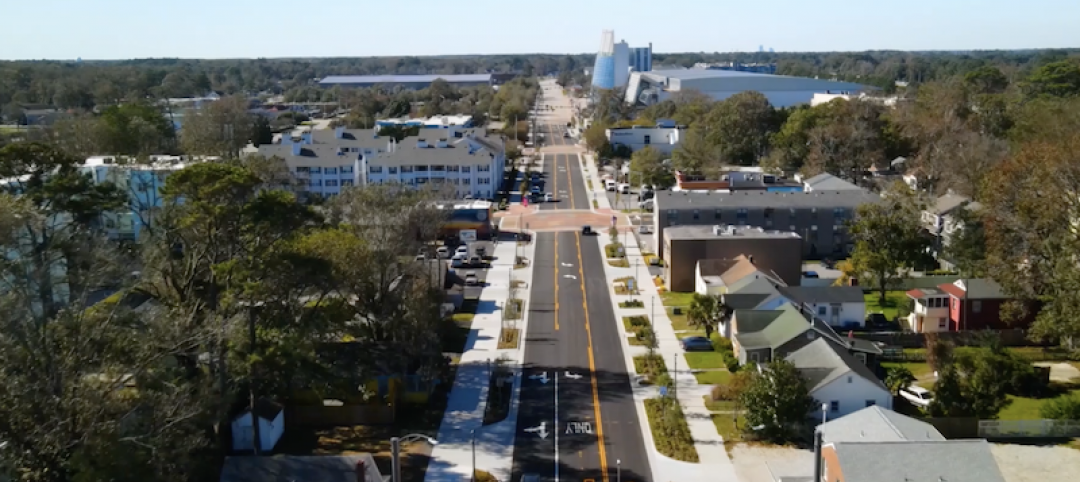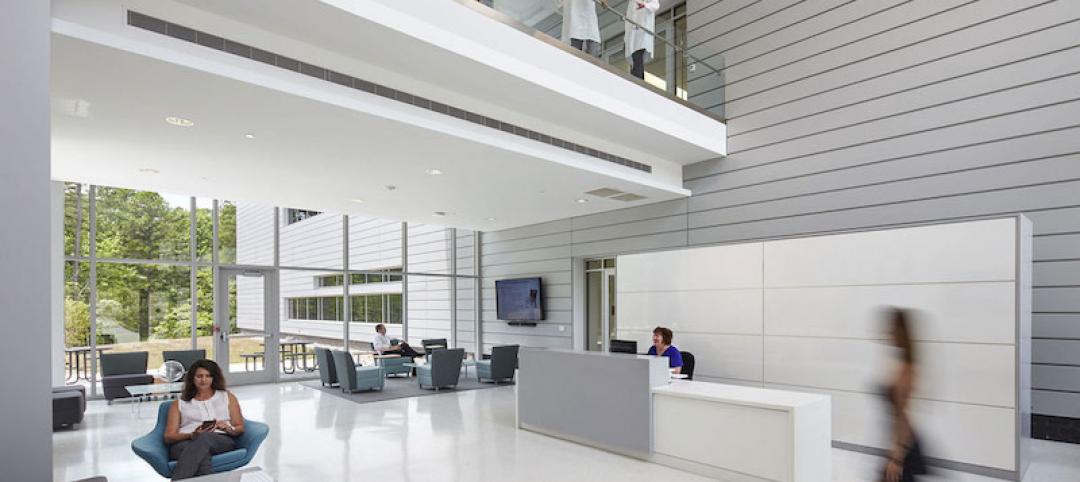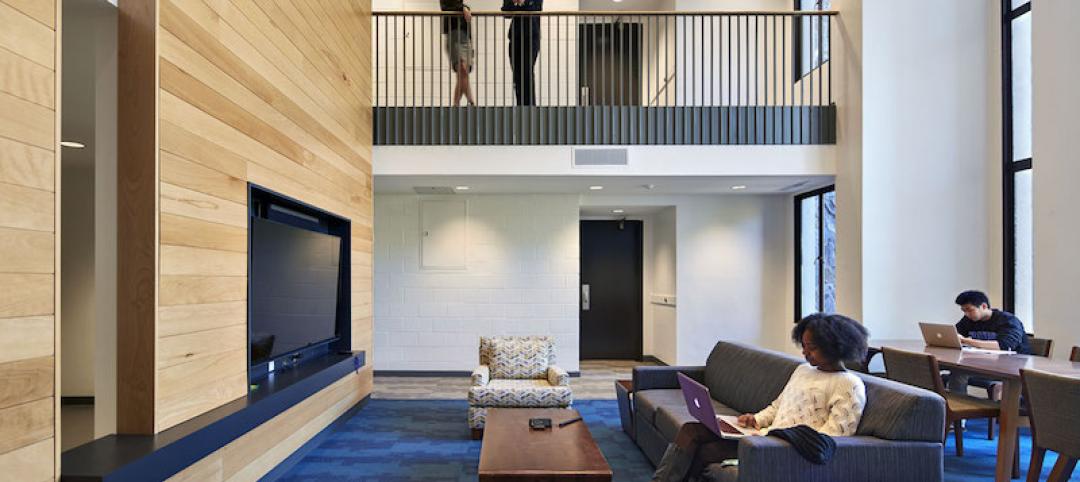The business case for prioritizing occupant well-being in building design is compelling. The International WELL Building Institute (IWBI) cites attracting top talent, increasing productivity, and improving environmental, social or governance (ESG) performance as key outcomes of leveraging tools like their WELL Building Standard to develop healthier environments.
Applying WELL provides us an opportunity to utilize our built environment to better our physical and mental health. After all, The National Human Activity Pattern Survey study determined that humans spend approximately 90% of our time in enclosed spaces, whether homes, offices, schools, or other built environments. In addition to behaviors, medical care, and our family genes, our physical environment is among the major factors that determine our health and well-being.
By incorporating WELL’s 10 concepts — air, water, nourishment, light, movement, thermal comfort, sound, materials, mind, and community — designers can help clients achieve business goals through built environments that improve nutrition, fitness, mood, and sleep patterns of occupants.
Promoting Movement through the Built Environment
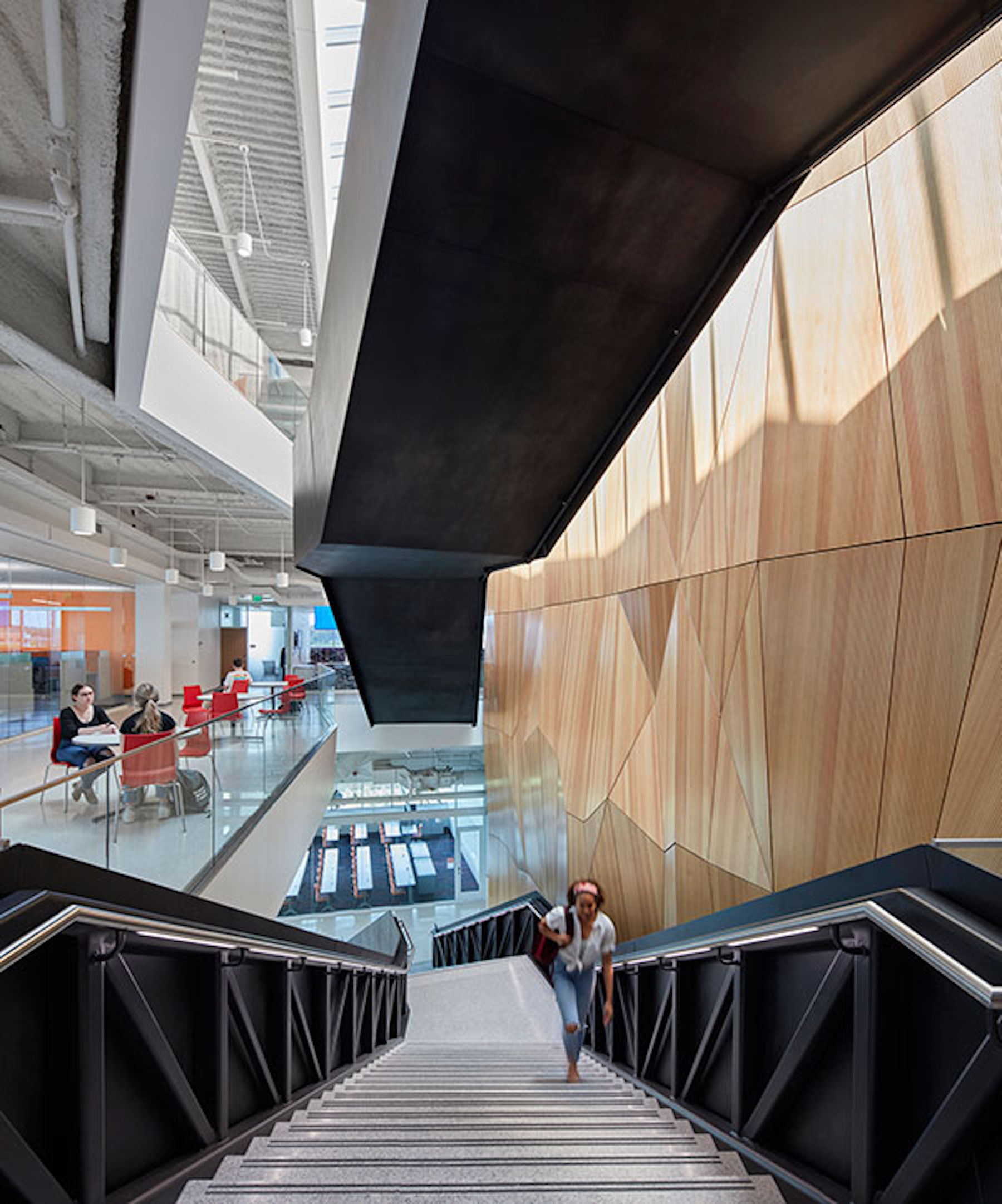
The Movement concept centers on design that encourages physical activity to improve occupants’ overall well-being. This includes circulation through the building and considerations of site, such as the walkability of the surrounding area, access to multimodal or public transportation, and related amenities.
We seek opportunities to utilize active circulation in every building we design whether it is through engaging monumental stairs, gracious hallways, visual interest, or dynamic wayfinding. These strategies promote physical activity to create an energetic built environment. Appealing to all the senses with biophilic design, natural light, and the integration of art or music calms the mind and encourages movement along building pathways.
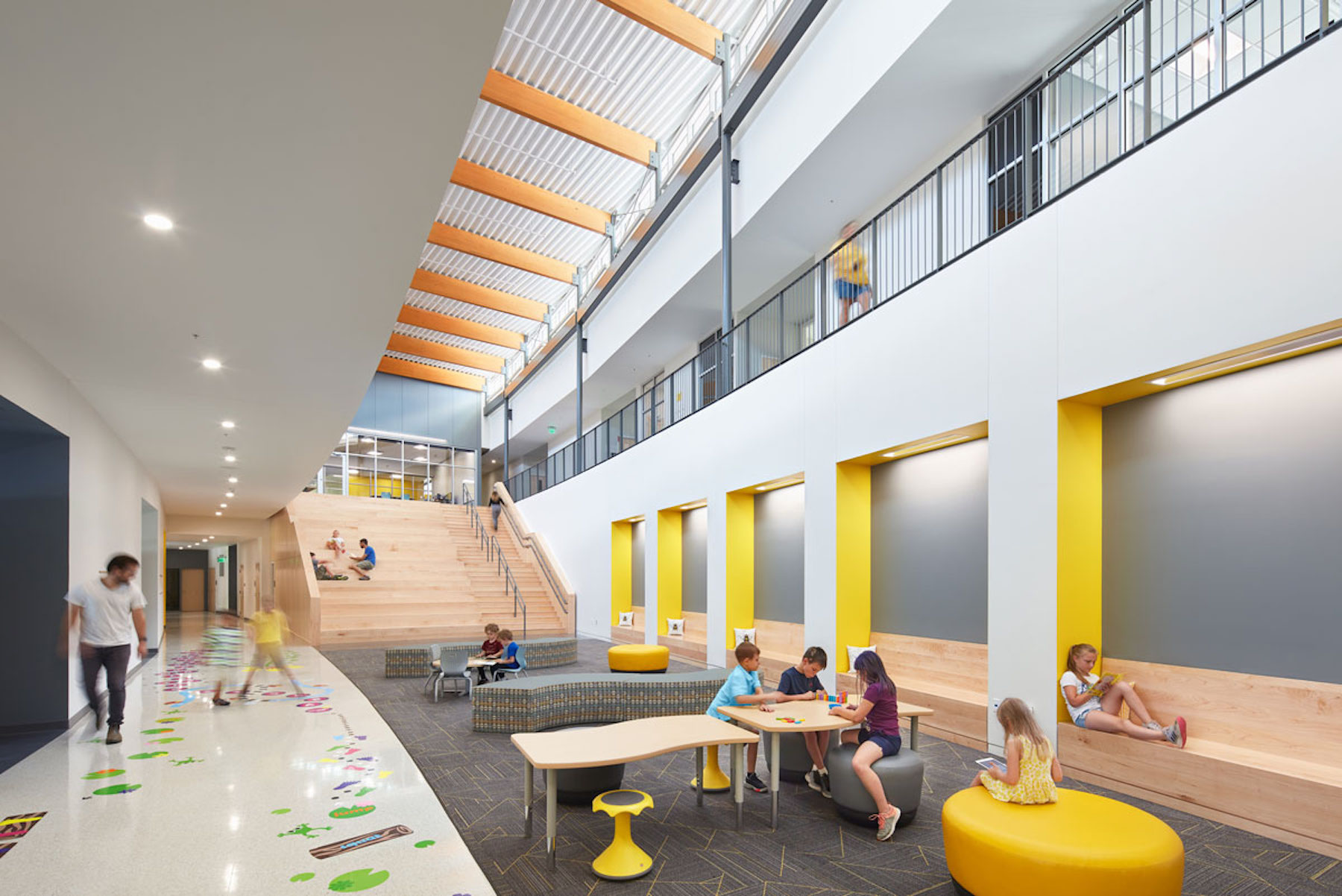
Not all projects have the real estate for monumental stairs, but we can still find ways to encourage movement and provide stimulation through the design of interior and exterior spaces. Ergonomics and active furnishings are also important for supporting occupant well-being. When you are comfortable, your mind and body are both supported and you are able to be more focused and productive.
Air Quality and Material Selection Impact Health
Improving indoor air quality and selecting healthy, sustainable materials go hand-in-hand, unifying the Air and Materials concepts. Reducing pollutants through building systems, avoiding or minimizing certain types of materials, and integrating elements like operable windows play a role in improving air quality and overall health. Air quality monitor systems are valuable tools for regularly checking and understanding air quality in a building.
As we design and construct our new Raleigh, NC office, we are pursuing WELL accreditation. We believe this will have a valuable impact on our work and presents an opportunity to thoroughly test the program as the designer, client, and end user. One of the most compelling ideas from WELL goes beyond simply designing well-intentioned spaces and emphasizes continual surveying and monitoring that allows for proof of concept or tweaking things when necessary.
Access to Natural Light Benefits Circadian Rhythms and Mental Health
Light is the leading driver of visual and circadian systems, making it a critical consideration during the design process. When we have access to natural light, we experience better sleep quality, mood, and productivity.
In the design process, daylight simulations and energy modeling help us determine how to make the best use of natural light based on a building site’s and geography, while also considering thermal comfort and energy efficiency. The use of electric light should consider quality, control glare, and be well-balanced to support occupant well-being. Controllability is a key consideration, ensuring the flexibility for occupants to adjust color temperature or level to support individual focus and productivity.
Nourishing Body and Mind with Healthy Foods, Natural Light
Nourishment intertwines multiple WELL concepts including mind, body, and light. The positive effects of natural light and biophilic design on mental health have been well-documented, and these are two strategies we prioritize in every design. The selection of natural materials and finishes and views to the outdoors are ways we promote cognitive and emotional well-being in the built environment.

Nourishment also encompasses nutritional transparency and the availability of fruits and vegetables, calling designers and clients to integrate food environments that prioritize healthy choices. The balance of design choices that support mental health and mindful eating support overall health.
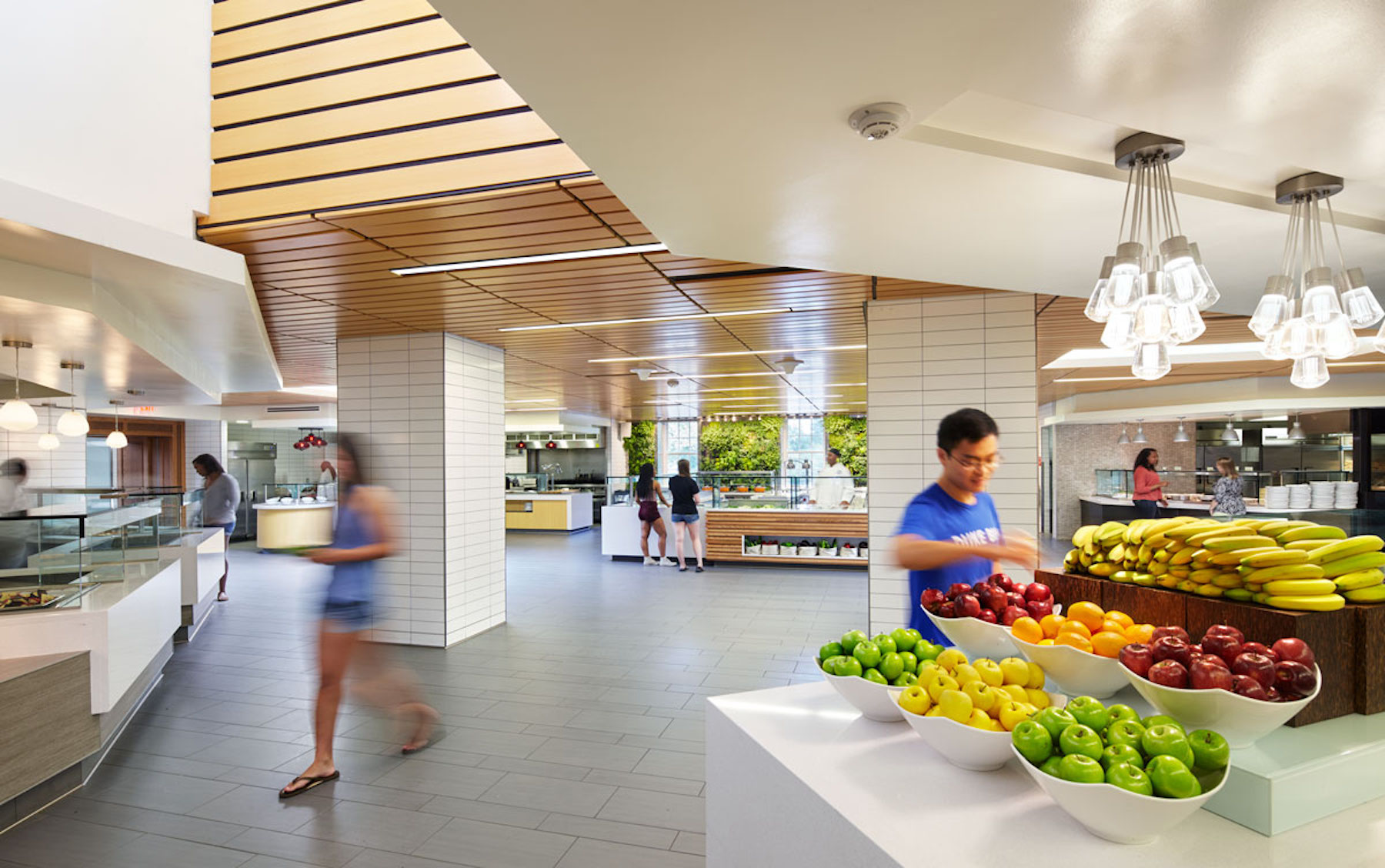
Strong Communities Promote Health and Wellness
WELL’s Community concept is aimed to establish an inclusive, engaged occupant community within the built environment. A strong sense of community and connection with others is central to all aspects of our health and well-being – social, emotional, mental, and physical.
Every project we design can and should support strong social connections between occupants. Creating open, inviting, and accessible communal spaces is an important strategy for strengthening community. Transparency and clear sight lines, where occupants can see others engaged in various activities, also promote a sense of connection, and foster impromptu interactions.
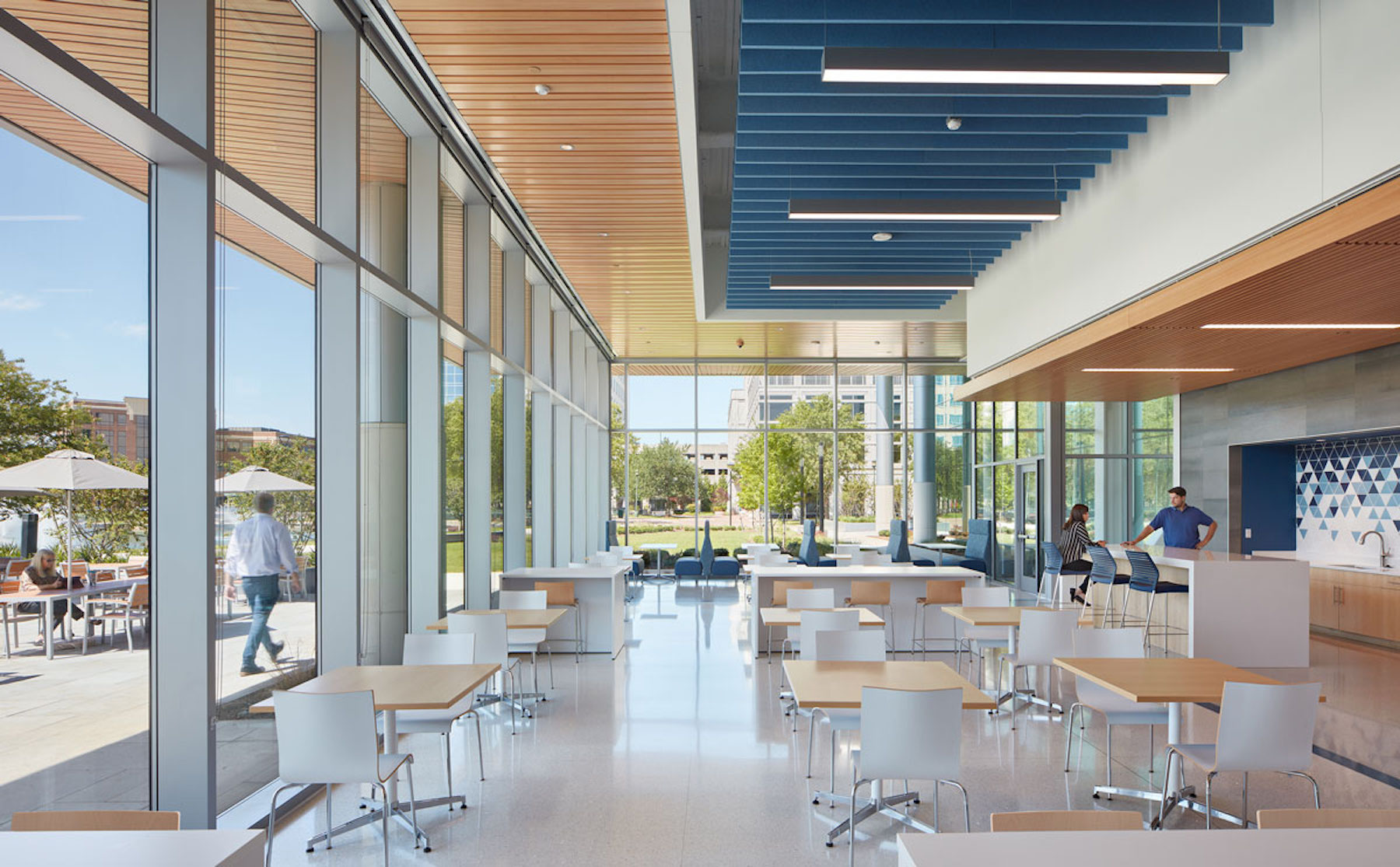
I believe that designing for wellness is simply good design. We should always prioritize the health of occupants in the design and material selection process, and tools like WELL are critical to helping design teams identify where to implement certain strategies. I view WELL as an essential roadmap for clients in holistic design thinking and try to apply these concepts in every project I work on.
More from Author
Clark Nexsen | Sep 30, 2024
The importance of selecting healthy materials for K-12 projects
Clark Nexsen interior designers Anna Claire Beethoven and Brittney Just, CID, IIDA, LEED Green Associate, share why it is imperative to specify healthy building materials in K-12 schools.
Clark Nexsen | Aug 1, 2024
How current and future trends are shaping the libraries of tomorrow
Over the last few years, public libraries have transitioned from being buildings that only store and lend books to being fully featured community centers.
Clark Nexsen | Apr 25, 2024
How pools can positively affect communities
Clark Nexsen senior architects Jennifer Heintz and Dorothea Schulz discuss how pools can create jobs, break down barriers, and create opportunities within communities.
Clark Nexsen | Oct 2, 2023
4 design strategies for successful K-12 magnet schools
Clark Nexsen's Donna Francis, AIA, Principal, and Becky Brady, AIA, share four reasons why diverse K-12 magnet schools require diverse design.
Clark Nexsen | May 17, 2023
Designing K-12 schools for students and safety
While bullying, mental health, and other acts of violence are all too common in schools today, designers have shown that smart and subtle preventive steps can make a big difference. Clark Nexsen’s Becky Brady shares how prevention and taking action at the design level can create safe and engaging learning environments.
Clark Nexsen | Jun 3, 2021
What's next for workplace design?
Balancing personal space and the need for collaboration.
Clark Nexsen | Apr 1, 2021
The changing face of freshman and sophomore student housing
As part of a surge in new housing projects for freshman and sophomores, we are seeing increasing demand for double occupancy rooms and suite-style arrangements in both new construction and renovation projects.
Clark Nexsen | Feb 17, 2021
Best practices for streetscape design that cultivates community
Well-designed streetscapes provide a wealth of benefits for their respective communities.
Clark Nexsen | Oct 20, 2020
Best practices in S+T office design
Within the constraints of the typical COVID-19 office protocols, lab users face the additional challenge of working with hands-on processes, tight schedules, and shared resources.
Clark Nexsen | Aug 3, 2020
5 reasons universities are renovating student housing
Clark Nexsen’s Student Life practice leader, Peter Aranyi, discusses the benefits of renovation and why it offers particular value to campuses nationwide.

